Why you should prepare your winter fungicide application now
Related Articles
With so many fungicide options denied to greenkeepers for autumn / winter applications, decisions that will be key to ensuring a successful outcome need to be taken early as regards which programmes and fungicide combinations will be required to defend their turf territory.
The summer of 2021, though still lingering on, is unlikely to be one that weather wise, we will have positive thoughts about.
Covid 19 apart, memory recall will be of low cloud, leaden skies, below average temperatures and in many areas, high rainfall. However, daylight hours are now shortening and it will not be long before autumn kicks in.
These climatic conditions are not conducive to the health and well being of plants and this, combined with a high level of wear on a golf course from players wanting to play as much as possible to catch up on their game after so many months of inactivity, has placed a high level of stress on the turf. All this can create a perfect storm with a weakened root system and lack of stored carbohydrate as autumn approaches, making the turf more susceptible to disease attack.
And now, with so many fungicide options denied to greenkeepers, decisions that will be key to ensuring a successful outcome need to be taken early as regards which programmes and fungicide combinations will be required to defend their turf territory.
For autumn / winter applications, the requirement is to prepare a preventative programme using a wide range of ‘actives’, which work well in mixtures and sequences. Rigby Taylor has developed a wide range of programmes combining the benefits of fungicides and nutrition products.
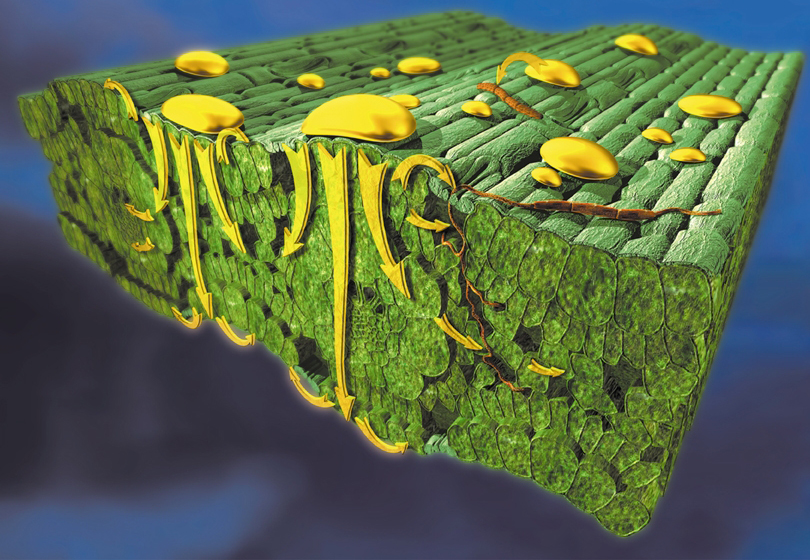
Eland applications penetrate tissue stored within the leaf and its active is released over extended time period, providing long term protection
Protect to prevent
Particularly effective under cool, cold conditions is the broad spectrum turf fungicide Eland and applications now will provide disease protection for up to 50 days.
This long term protection is achieved through the spray deposit being held on the leaf long enough to penetrate and be stored within the leaf tissue, which serves as a fungicide reservoir constantly releasing its active ingredient, pyraclostrobin, to provide long term protection.
The mantra, ‘preventation is better than a cure’, may be a cliché but it is more relevant today than it has ever been. Planning needs to be taken now to ensure the correct protection measures are in place and ready to be put into action.
STRI research trials over several years have proven that preventative disease control programmes outperform curative options when analysed for turf quality, colour and presence of disease. An eight month trial compared nine preventative and three curative programmes, as well as one untreated plot. The first three programmes used purely preventative fungicides from a range of manufactures. The rest of the preventative plots used a combination of fungicides that are tank mixed with the Rigby Taylor products Option or Trimate (stress relief and recovery agents), plus added plant health products to reflect an integrated approach.
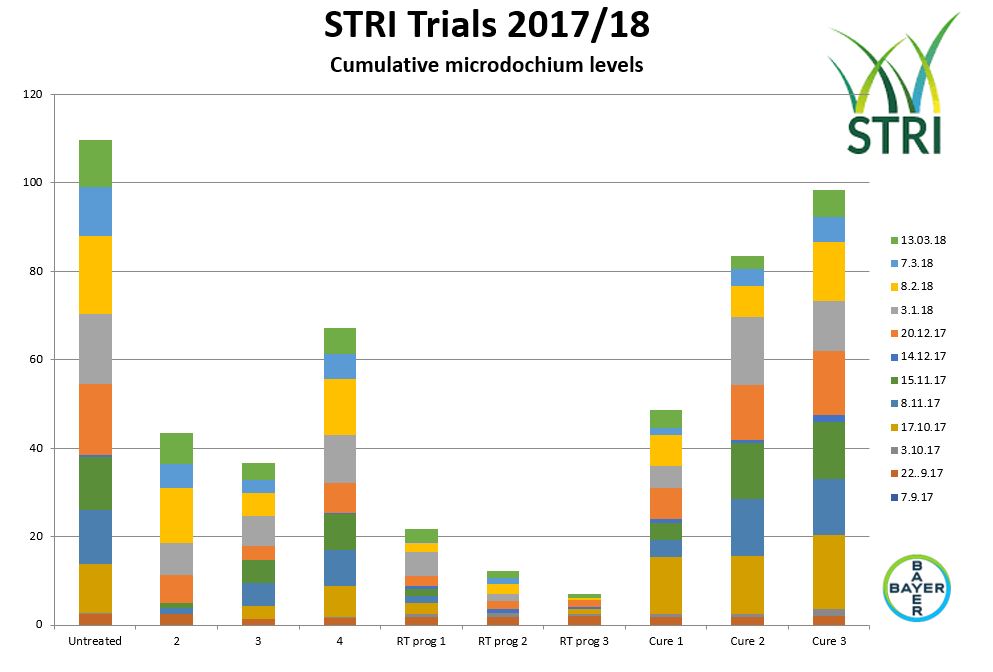
STRI trials – Autumn 2017: Trials showed conclusively that prevention is better than cure
In general, preventative programmes five to seven (see Graph 1 – Rigby Taylor (RT) prog’s 1, 2 and 3) showed the most consistent results across turf colour, quality and Microdochium Patch presence by using an integrated approach with both fungicides and plant health products.
The fungicides within the curative programmes (Graph 2 (11 -13)) were applied as and when disease developed to an unacceptable level; the latter mimicking traditional and past control strategies. It is important to note that none of the trial plots had any cultural controls or biological practices applied prior to or during the trial, other than mowing and switching, which was carried out when necessary.
Pre-planning and control are essential requirements and there may be opportunities to integrate some of the aforementioned products into the winter programme, which will enable the plant to resist or repel all that is thrown at it and be in an ideal state to advance into the spring and take up a healthy position.
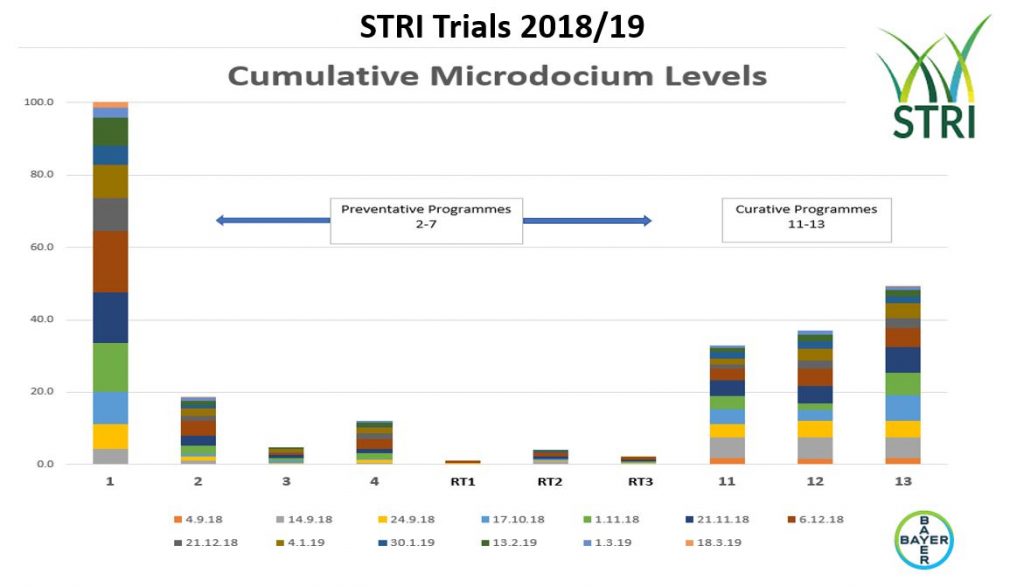
STRI trials – Autumn 2018: The three RT preventative programmes were 94% better than the curative programmes
Raising the colours
Poor grass colour (short daylight hours, cold temperatures) is often a feature of autumn and winter conditions. Applications of iron are often used to enhance turf colour over this period because the lack of availability of natural soil iron that, though plentiful in the soil, can be deficient in the plant as it is mostly present in an insoluble form, which it is unable to take up. However, the continued use of iron products based on ferrous sulphate can lead to problems such as black layer, turf blackening and reduced root growth. Also, complex molecules protect the biologically active ferrous iron within their ring-like structures, preventing it from reacting with other substances and becoming unavailable for plant uptake.
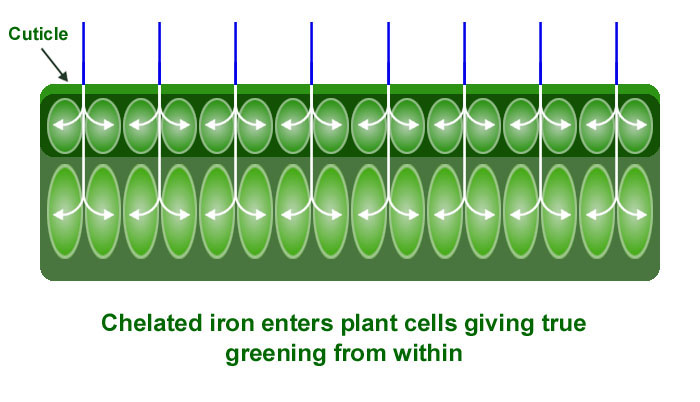
Above: Iron products containing ferrous sulphate ‘sit’ on the leaf surface and can cause blackening of the leaf. Below: Chelated iron products are absorbed by the leaf and enter plant cells
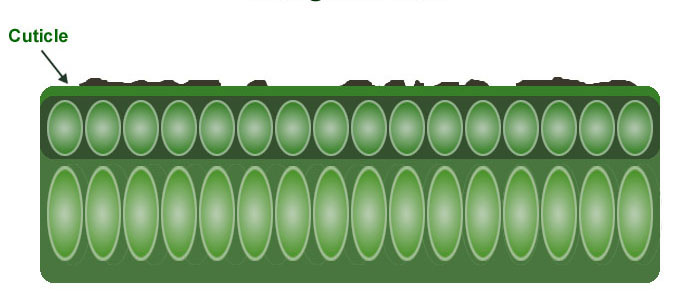
Ideally, the selection of products containing chelated iron such as Magnet Velocite, which enter the plant cells and overcome these problems, should be considered. These products are very effective in providing iron in a biological form that can be utilised by the turf, provide enhanced greening and ‘harden’ the plant leaving it less susceptible to disease infection and subsequent damage … which is where we started at the beginning of this feature!

























